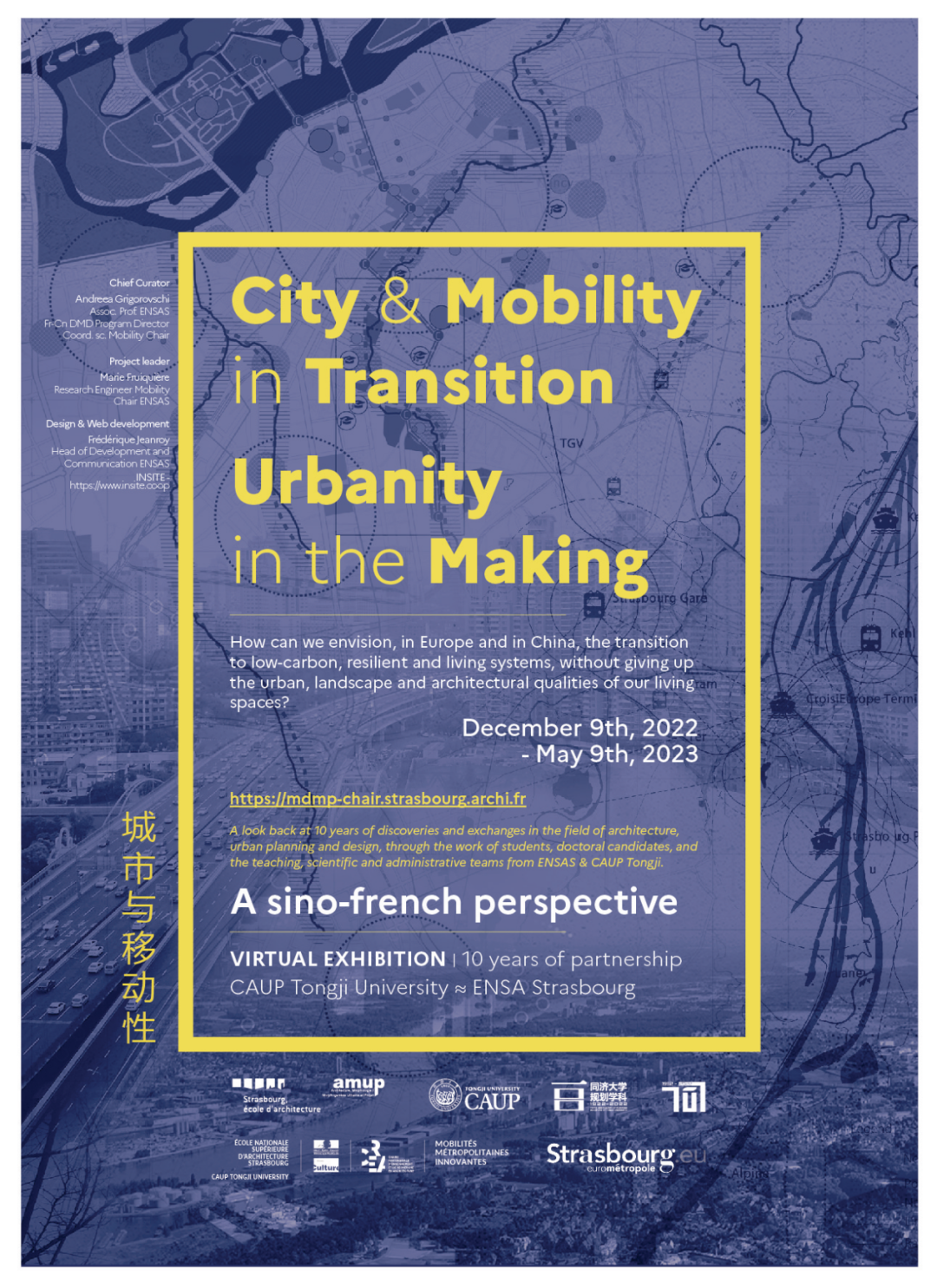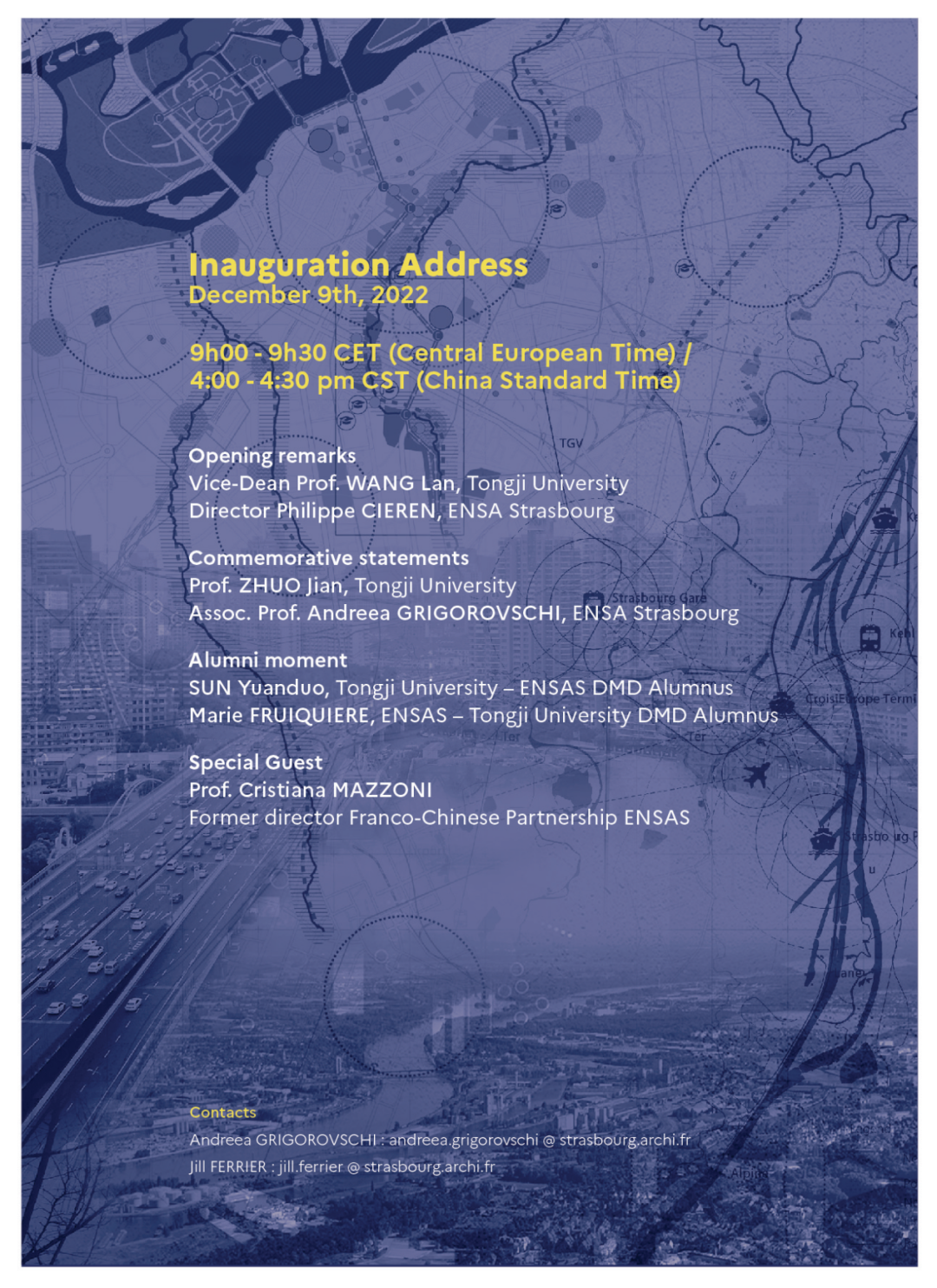
Exhibition
10+ Years CAUP Tongji - ENSA Strasbourg Partnership
City & Mobility in Transition


Exhibition Time:
December 9th, 2022-May 9th, 2023
Exhibition Link:
https://mdmp-chair.strasbourg.archi.fr/
Access links for the Expo Inauguration:
December. 9th, 4 PM (China Standard Time)
https://teams.microsoft.com/l/meetup-join/19%3ameeting_MDdiYjVhZTQtZmI0NS00MTg4LWEyOTEtMTIxZTk2ZTNlNDI1%40thread.v2/0?context=%7b%22Tid%22%3a%222cc2ac6f-f159-4947-88f2-b790934d76ea%22%2c%22Oid%22%3a%22e2dd523a-b316-4ace-87b3-4b65693e2f05%22%7d
Access links for the Expo Inauguration:
This exhibition echoes the desire for discovery, exchange, complicity and sharing between Chinese and European cultures, expressed within the field of architecture and urban planning through the work of several hundred students and doctoral candidates, as well as the teaching, research and administrative teams who, for over a decade, have contributed to the development of this partnership.
The recent covid19 pandemic and the deeper ecological crisis highlight more than ever the global character of the challenges we are facing and the need to collaboratively initiate and support transition (energy, environment, etc.) collaboratively, to save our planet. Europe and China both recognize the urgency of climate change and are defining transition objectives for 2050 and 2060 respectively. Faced with these challenges, in China as in France, we are called upon to review our ways of living, moving, and producing, to reinvent more sustainable and sober infrastructures and the spatial environment, to rethink the meaning and organization of our architecture, our cities and our territories, to reexamine and reconstruct our urbanity.
How can we design, in Europe and in China, the transition to low-carbon, resilient and living systems, without giving up the urban, landscape and architectural qualities of our living spaces?
Between technical solutions and profound changes in mentalities and behaviors, how can we engage in mobility transition and rethink the infrastructural supports of urban & territorial frameworks and architecture?
How can we anchor our societal projects and our city projects in a locality redefined according to its own resources (geographical, natural, cultural), and ecosystems?
If these questions unite us today, the last decade of our ENSAS-Tongji collaboration taught us that it is on our different approaches, points of view, and levers of action, on the confrontation of our tools and methods, and on our cultural and disciplinary differences that we can draw on to build answers.
The exhibition pays tribute to this common and diversified intelligence, mobilized since 2011 to face the challenges of urbanity and the urgency of ecological concerns by seizing their locally and culturally specific expressions. It thus brings together a selection of projects and research work carried out by students (project workshops, dissertations/ master’s theses, international competitions), doctoral candidates and professors involved in our Franco-Chinese dual master’s degree, our Mobility Chair activities or as part of our exchange programs. This multitude of surveys, investigations, conceptual explorations and spatial designs carried out in Chinese and European contexts over more than 10 years, allows us to review our reflective paths, mirror each other’s work, reveal the diversity of our approaches and build our shared space of experience. Between sustainability issues and environmental transition concerns, between high-tech responses and more frugal proposals, between data-driven solutions and human/living-oriented perspectives, the exhibition provides a rich and diverse basis for reflection on our respective horizons of expectation.
 ABOUT US
ABOUT US




